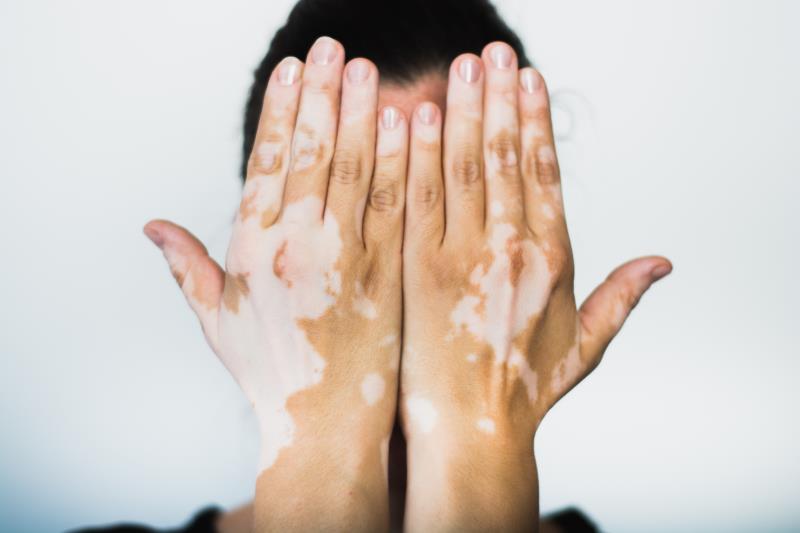
Treatment with the combination of the small molecule Janus kinase 1/2 inhibitor baricitinib plus phototherapy may help reduce disease activity and induce repigmentation in adults with extensive and active nonsegmental vitiligo, according to the results of a phase II study.
A total of 49 patients (median age 49.9 years, 71 percent female) were randomly assigned to receive baricitinib 4 mg (n=37) or placebo (n=12) daily for 36 weeks. The study drug was administered alone for the first 12 weeks of treatment and then in combination with narrowband UV-B twice a week from weeks 12 to 36.
Researchers examined the mean percentage change in total Vitiligo Area Scoring Index (VASI) score from baseline to week 36, the primary study outcome. They aimed to show that the treatment with baricitinib plus narrowband UV-B would induce a change that significantly exceeded the repigmented surface threshold of 42.9 percent previously observed in patients treated with narrowband UV-B alone. Changes in disease activity and quality of life (QOL), the secondary outcomes, as well as adverse events were also assessed.
At week 36, the mean change in total VASI was −44.8 percent (95 percent confidence interval [CI], −58.4 to −31.3) with baricitinib vs −9.2 percent (95 percent CI, −27.7 to 24.7) with placebo. The difference was not greater than the sufficient repigmented surface threshold of 42.9 percent.
However, post hoc analyses showed that the change in total VASI score at week 36 was significantly greater in the baricitinib than in the placebo group (−44.8 percent vs −9.2 percent; p=0.02). Furthermore, patients in the baricitinib group had greater improvements in disease activity and QOL compared with those in the placebo group.
The incidence of adverse events was similar in the two treatment groups.